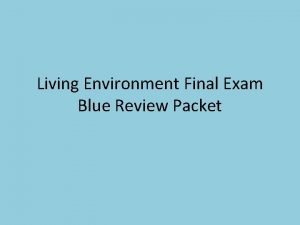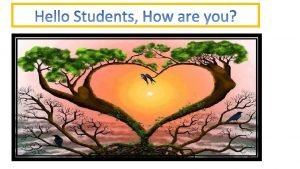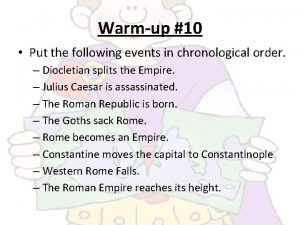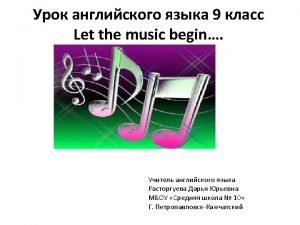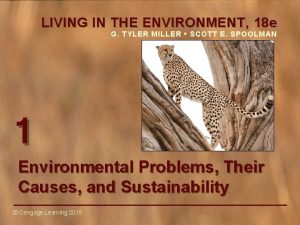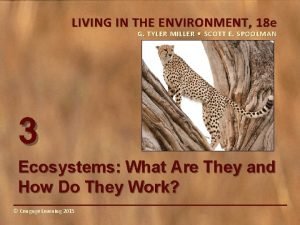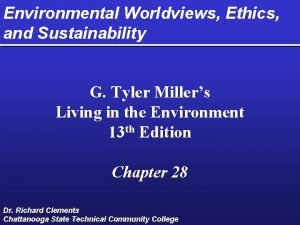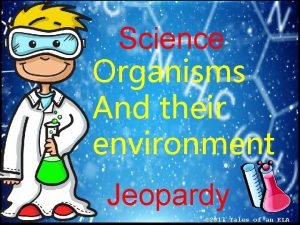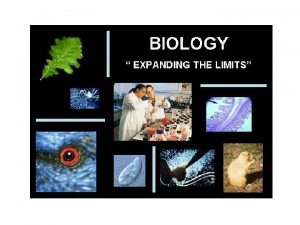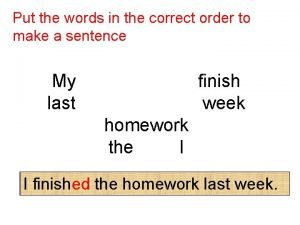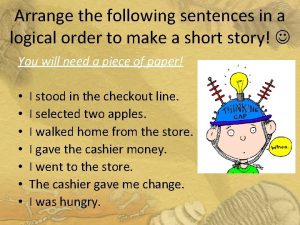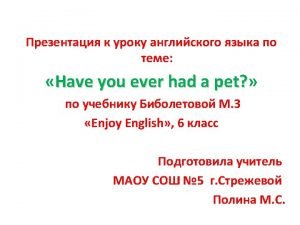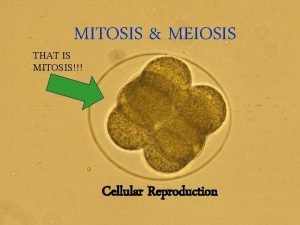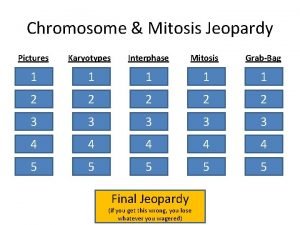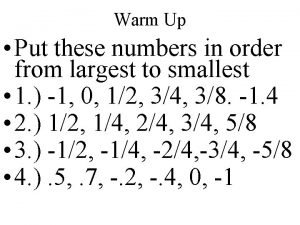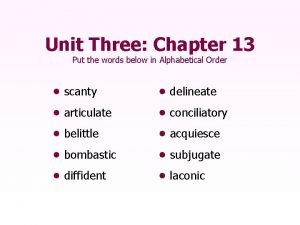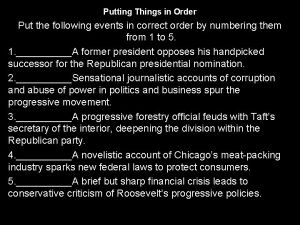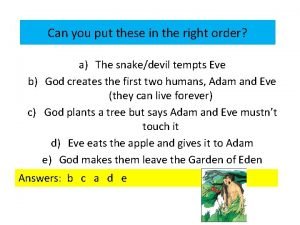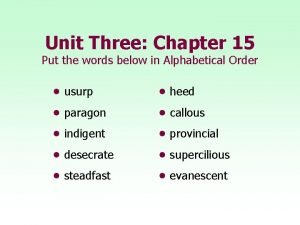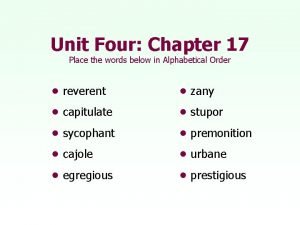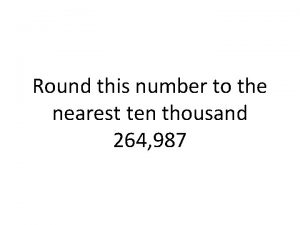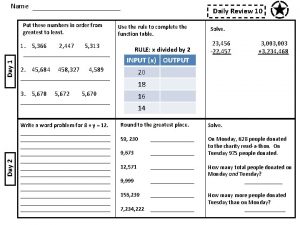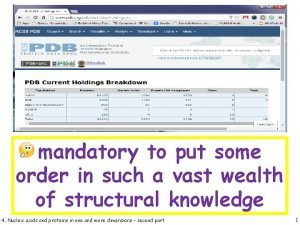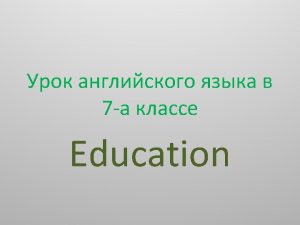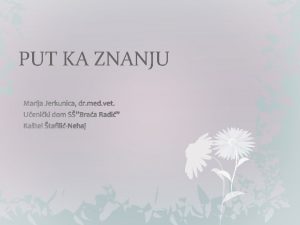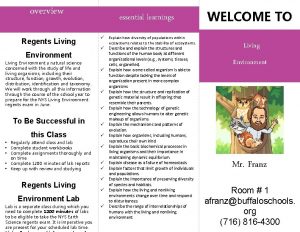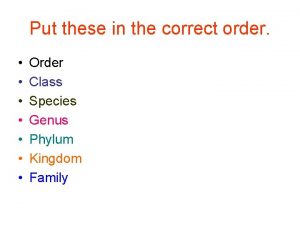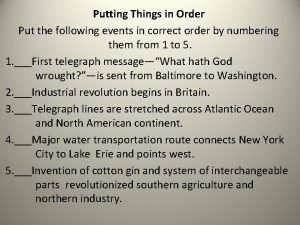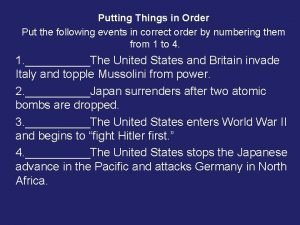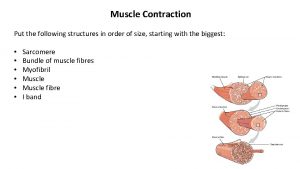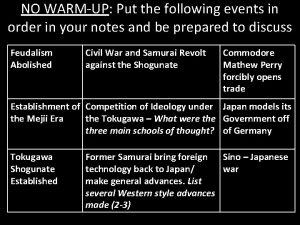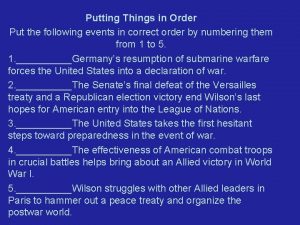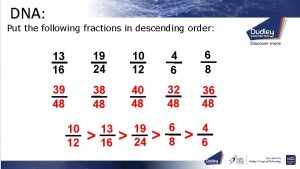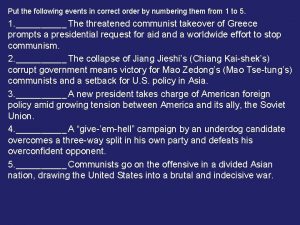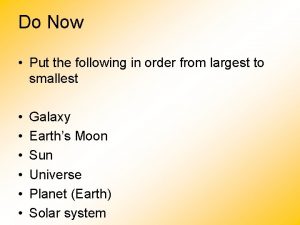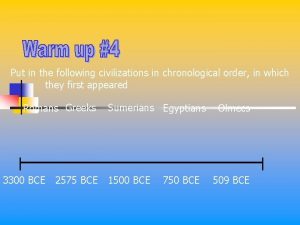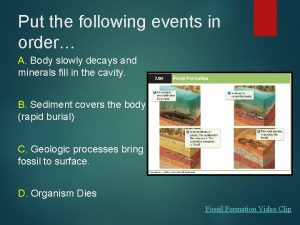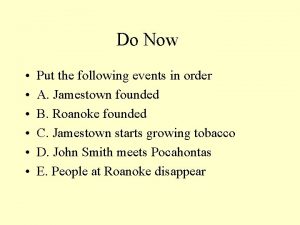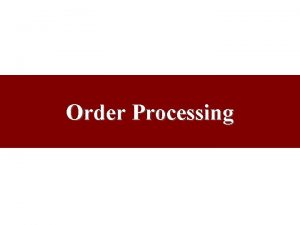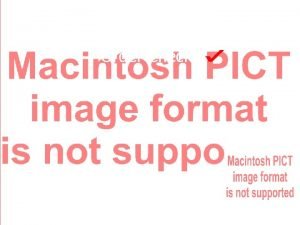Living Environment Review Put the following in order
















































- Slides: 48

Living Environment Review

Put the following in order from largest to smallest: • • cell gene chromosome nucleus Cell Nucleus Chromosome Gene • • • community species population biosphere ecosystem Biosphere Ecosystem community population species • • • organism organelle organ system cell Tissue Organism Organ system Organ Tissue Cell Organelle

cell membrane – allows materials to move in and out of cell ribosome Cell wall nucleus chloroplast mitochondria animal cell plant cell

MITOCHONDRIA CELL MEMBRANE NUCLEUS CYTOPLASM

CO 2 H 2 O and O 2 Found on leaf epidermis Helps to maintain homeostasis On a cool humid day On a hot dry day – to prevent water loss

PHOTOSYNTHESIS In which type(s) of organisms does this occur? ? Formula: Plants CO 2 + H 2 O C 6 H 12 O 6 + O 2 + H 2 O CARBON DIOXIDE + WATER GLUCOSE + OXYGEN + WATER End result: GLUCOSE –USED IN CELLULAR RESPIRATION OXYGEN – WASTE PRODUCT / USED IN CELLULAR RESPIRATION Organelle: CHLOROPLASTS

RESPIRATION In which type(s) of organisms does this occur? ? Formula: All organisms C 6 H 12 O 6 + O 2 + H 2 O CO 2 + H 2 O + ATP GLUCOSE + OXYGEN + WATER CARBON DIOXIDE + WATER + energy End result: ENERGY Organelle: MITOCHONDRIA

• Almost all chemical reactions depend on ENZYMES photosynthesis CARBON DIOXIDE - CO 2 WATER - H 2 O OXYGEN - O 2 GLUCOSE - C 6 H 12 O 6

Organic compounds must contain • Carbon and Hydrogen • Examples: glucose • Examples of inorganic compounds: Oxygen Water Carbon dioxide

Proteins – used for growth and repair • Shape determined by amino acid sequence which determines function Amino acid + amino acid polypeptide Examples: Enzymes catalyst

Catalyst = Controls rate of reaction = Works at specific temp and p. H = Protein / enzyme

Lipids – used as stored energy • Fatty acid + glycerol lipids • Examples • Fats and oils • Cell membrane

nucleic acid – make up DNA nucleotide + nucleotide nucleic acids Examples: DNA RNA

Carbohydrates – used for energy (respiration) Simple sugars + simple sugars starches Examples: Starch Sugars Pasta bread

Genetic engineering Recombinant DNA Gene manipulation Gene splicing Restriction enzymes – cut DNA Bacterial cell that contains human DNA – used to make human insulin

CLONING – MAKES AN EXACT COPY

Fertilization Sperm • • • egg zygote Where does this happen? oviduct Meiosis formed? 1 and 2 What happens next? mitosis And then after that? differentiate Where? uterus How? Different genes are turned on/off forming different cell types

In order for a mutation to be passed on to the next generation, the mutation must occur in Egg cells Sperm • _______ or _________ Gametes • Aka - __________

Oviduct- where fertilization occurs Uterus – where the baby develops Ovary – produces eggs and estrogen Vagina – birth canal


Testes – produces sperm and testosterone

Receptor proteins (molecules)

The endocrine system produces hormones that fit into receptor molecules on cells

The immune system produces antibodies that fit into receptor molecules (antigen) on cells pathogen or allergen

• WBC – produced as an immune response – engulfing a pathogen (antigen) • Pathogen – causes disease (Ex. Virus, bact) • Immune response – when your body identifies an antigen – production of WBC and antibodies

Vaccine = • Contains weakened form of virus • Contains antigens causes an immune response antibodies to be produced

Pathogen • A microorganism that causes disease – Ex. Virus, bacteria or fungi

Feedback Mechanism

Life Functions (know a few and how each helps to maintain homeostasis) • N = nutrition – break down large molecules into usable pieces (digestive system) • R = regulation- nervous system • T = transport – move materials throughout organism or cell (circulatory system) • E = excretion - get rid of waste (urinary system)

In an ecosystem… • The original source of energy comes from SUN Organisms required for a balanced ecosystem are DECOMPOSERS because they RECYCLE NUTRIENTS

High diversity = Stable ecosystem = Increased chance of species survival Ex:

Evolutionary Tree Diagram • These types of diagrams show – common ancestor – species relationships – species extinction

Carrying Capacity

SUCCESSION Pioneer organisms Climax community

Pond SUCCESSION 2 1 4 3

SUCCESSION

Environmental Problems • Sulfur dioxide = ACID RAIN • UV rays = OZONE LAYER (CFCs) • Carbon dioxide = greenhouse gas leads to global warming

Fossil fuels = oil, coal, gas = Nonrenewable resources Ways to reduce consumption – recycle, conserve

Renewable resources = Solar, wind, water (hydro) = No pollution

Osmosis - movement of water from an area of high concentration to low concentration • Before: • After: x x x x

Plant cell in fresh water Salt = shrink fresh=fat

Measuring VOLUME = 26 ml WIDTH OF OBJECT = 800 LENGTH = 2. 5 CM = 25 MM

Stains and Indicators – change color Stains – used to see cell in the presence of certain organelles substances Ex. Benedicts – tests for simple sugars Lugols iodine – starch Bromthymol Blue – CO 2 Ex. Methylene blue and Iodine – used to see nucleus

Paper Chromatography • separates pigments based on molecule size

Gel electrophoresis • separates DNA fragments based on size • Used to determine relationships

Biological control • a method of controlling pests that relies on predation, parasitism or other natural mechanisms – Ex. Ladybugs, bats, lacewing

Energy Transfer producers

DNA
 Living environment review packet
Living environment review packet Arrange the sentences in correct order
Arrange the sentences in correct order Put the following actions in order
Put the following actions in order List the following events in the correct order
List the following events in the correct order Correct order
Correct order Put the letters in the right order
Put the letters in the right order Via optica
Via optica Put out the light and then
Put out the light and then Put your right foot in
Put your right foot in Whats an energy pyramid
Whats an energy pyramid Shell living or nonliving
Shell living or nonliving Living non living dead
Living non living dead Smallest living unit of life
Smallest living unit of life Living in the environment
Living in the environment Living in the environment 18th edition
Living in the environment 18th edition Environmental worldviews ethics and sustainability
Environmental worldviews ethics and sustainability Living environment jeopardy
Living environment jeopardy What is the name
What is the name Financial environment in business environment
Financial environment in business environment Put the words in correct order
Put the words in correct order Arranging sentences in logical order worksheets
Arranging sentences in logical order worksheets Put these words in order
Put these words in order Put the letters in right order
Put the letters in right order Mitosis and meiosis
Mitosis and meiosis Name of cell
Name of cell What
What Put these numbers in order
Put these numbers in order Put the words below in alphabetical order
Put the words below in alphabetical order To put things in order
To put things in order Put these in order
Put these in order Complete the definitions with the words below
Complete the definitions with the words below Put the words below in alphabetical order
Put the words below in alphabetical order 638 rounded to the nearest ten
638 rounded to the nearest ten Put these in order
Put these in order Put some order here
Put some order here Put the phases of mitosis in order
Put the phases of mitosis in order Put the words under the following headings
Put the words under the following headings Put the following sentences into the correct tense
Put the following sentences into the correct tense Hình ảnh bộ gõ cơ thể búng tay
Hình ảnh bộ gõ cơ thể búng tay Lp html
Lp html Bổ thể
Bổ thể Tỉ lệ cơ thể trẻ em
Tỉ lệ cơ thể trẻ em Voi kéo gỗ như thế nào
Voi kéo gỗ như thế nào Tư thế worm breton là gì
Tư thế worm breton là gì Chúa sống lại
Chúa sống lại Các môn thể thao bắt đầu bằng tiếng nhảy
Các môn thể thao bắt đầu bằng tiếng nhảy Thế nào là hệ số cao nhất
Thế nào là hệ số cao nhất Các châu lục và đại dương trên thế giới
Các châu lục và đại dương trên thế giới Cong thức tính động năng
Cong thức tính động năng
